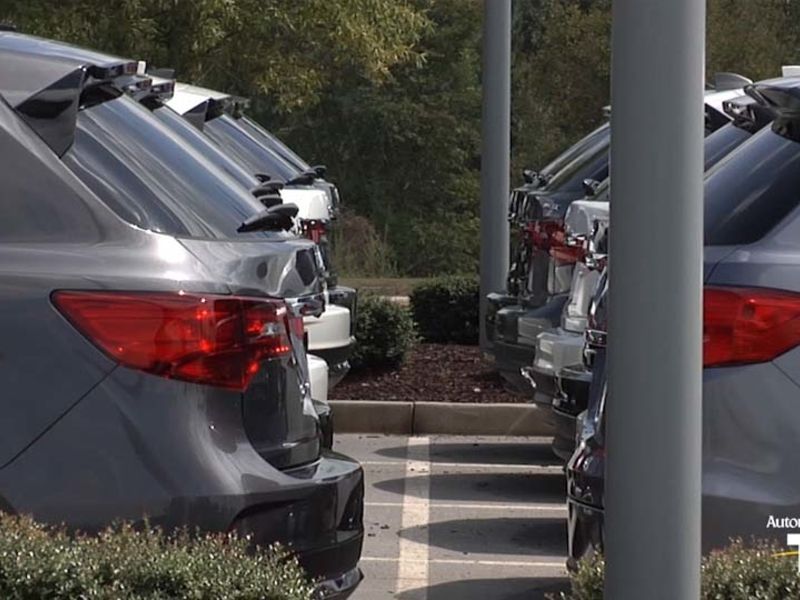
The second quarter made clear that U.S. auto sales are in recovery mode.
The question heading into the third quarter, with COVID-19 cases surging in major automotive markets in California, Florida and Texas, is whether the upward trend will continue.
The industry bounced back from a treacherous decline in March and early April, helped by particularly resilient demand for pickups, after the pandemic confined millions to their homes and cut off traffic to dealerships. On the used- vehicle side, certified pre-owned sales last month were on par with February’s, analysts said.
But the market lost some momentum in late June, said Jonathan Smoke, chief economist for Cox Automotive. A rebound in coronavirus cases could cause some people to second-guess going out, Smoke said, and the big discounts that drew customers in April and May aren’t as prevalent now.
That combination, Smoke said, is “probably going to produce a June that won’t be quite as robust as it could have been.”
Looking ahead, Cox Automotive said the U.S. could see more households experiencing financial distress beginning in August without an extension of unemployment benefits.
While U.S. sales have been on the upswing, the industry is on much shakier ground than a year ago. The seasonally adjusted, annualized selling rate for the month is expected to be 12.6 million to 13 million, down from 17.2 million in June 2019.
TrueCar’s ALG unit projected a 24 percent year-over-year decline in June. Edmunds is forecasting a 29 percent sales drop, while J.D. Power predicted a 28 percent drop.
Automakers are to release their latest sales reports Wednesday, July 1.
Cox is forecasting plunges of more than 30 percent for each of the Detroit 3 and a 23 percent decline for Toyota Motor North America. It said Hyundai-Kia sales, kept afloat by new utility vehicles, are expected to fall 14 percent.
Inventory shortages for key models could open the door for slower-selling competitors to make a move.
George Augustaitis, director of automotive industry analytics at CarGurus, said the Toyota RAV4 was down to less than a 40-day supply at the end of May. That could help the Nissan Rogue, for instance, gain market share.
Dealerships have just started to get deliveries from plants that reopened in mid-May to replenish inventories of pickups and other popular vehicles. Ford Motor Co. said it had fully returned to pre-coronavirus levels of U.S. production last week, two weeks sooner than anticipated, but newly built vehicles generally take about a month to reach dealerships.
“Whoever can get the most popular vehicles back into the lots first will have a lot more success on the new side, especially in the truck market, because we see how low some inventory levels are,” Augustaitis said, pointing to the Chevrolet Silverado as another top seller with low inventory.
June retail sales were down about 15 percent year-over-year, said Eric Lyman, chief industry analyst for ALG. Lyman said he’s bullish about auto sales long term and that there is still “robust demand” for new and used vehicles. But he said it would be foolish to believe the U.S. is out of the woods with regard to the coronavirus, which has led unemployment to soar and created economic uncertainty for many who are “still reconciling their personal financial situation.”
Lyman said dealerships adapted quickly to the COVID-19 era with an emphasis on digital retail technology, so another round of stay-at-home orders would be less disruptive if it occurred.
“This recovery that we’re seeing has been stronger than kind of what we were anticipating back in late March when we were reading tea leaves for the overall economy,” Lyman told Automotive News. “Things have been actually more in line with our optimistic scenario for 2020 sales than our pessimistic scenario.”
U.S. sales forecasts for the second quarter show steep declines across the industry. Cox expects General Motors, Ford and Volkswagen sales to be down 34 percent. Fiat Chrysler Automobiles could see a 39 percent decline, while Nissan sales could fall 48 percent. Cox predicts Toyota will have a 33 percent drop in the quarter.
Edmunds is forecasting total new- vehicle sales of 2.9 million in the second quarter, a 34 percent decrease.
During the quarter, many dealers had to lock their showrooms and cope with tight inventory levels when they reopened, said Mike Maroone, CEO of Maroone USA, which has five dealerships in Colorado and one in Florida. The service business recovered nicely in June, he said, after dropping significantly in May, but he’s still concerned about not having enough of the vehicles people want.
Inventories at Maroone’s stores fell to less than 10 days’ worth of Silverados and about 30 days’ worth of Ford F-150s. “Normally dealers want a 90 days supply of pickups due to the width and depth of the lineup,” he said.
Maroone said he started to see vehicles trickle in “in the last week” and is hoping the flow increases soon. GM and Ford are just now building vehicles allocated to Maroone’s stores several months ago. More recent allocations are extremely low, he said.
“We’re seeing vehicles that are invoiced and then having pretty extensive delays before they ship,” he said. “It’s a tough situation in that there’s very strong demand and very tight supply. It’s allowed some margin expansion, but it really doesn’t make up for the volume shortfall.”
Thomas King, president of data and analytics at J.D. Power, said automakers have a lot of catching up to do on production.
“The industry’s sold a lot of vehicles, but it’s had an extended period of either no or very low production, so we’re in this point where we’re going to start to see production have the potential to outpace demand,” King said. “For certain vehicle segments, the loss of the fleet volume will address the inventory constraints. Unfortunately, the place where those constraints remain most significant is in pickups.”
Hannah Lutz and Jamie Butters contributed to this report.